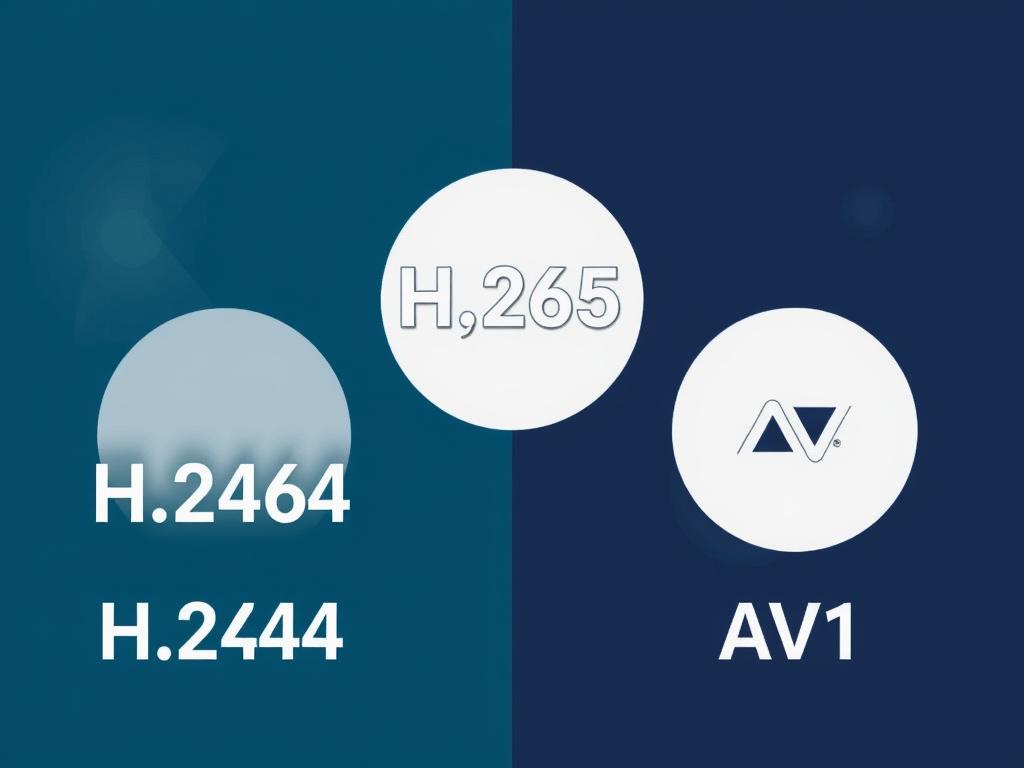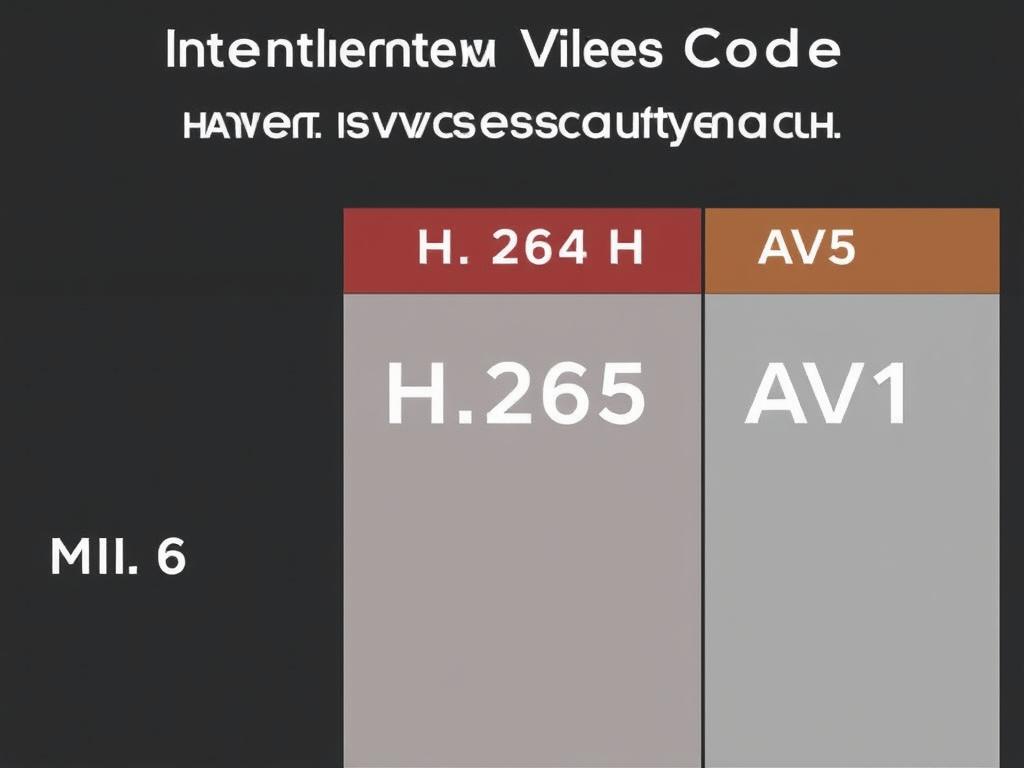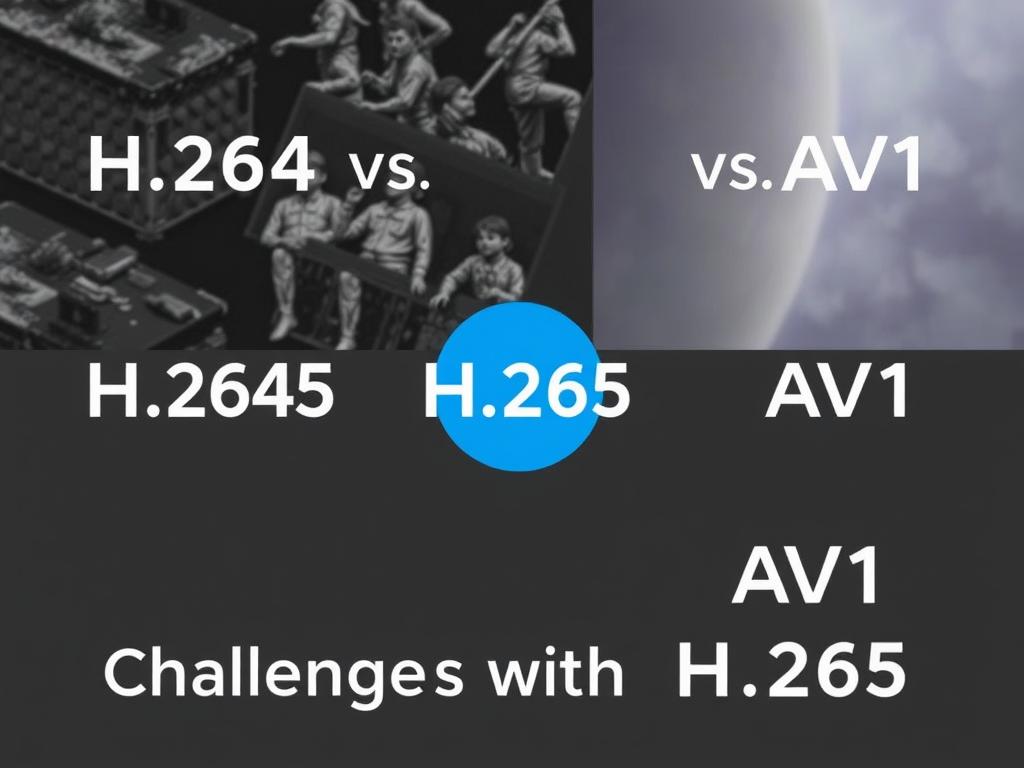In today’s digital world, video content plays a massive role in everything from entertainment to education and communication. Whether you’re streaming your favorite series, attending an online lecture, or sharing videos on social media, the technology powering these videos often goes unnoticed: video codecs. If you’ve ever wondered how videos get compressed and delivered over the internet without losing too much quality, understanding video codecs is key. In particular, H.264 vs. H.265 vs. AV1 are three popular video codecs you might hear about. Each has its strengths and specific use cases, which can make understanding the differences a bit tricky. So, let’s dive deep into the world of video codecs and demystify these formats to help you grasp why each matters.
What Are Video Codecs and Why Are They Important?

Before we get into comparing H.264 vs. H.265 vs. AV1, it’s important to understand what video codecs actually do. The word “codec” comes from “compressor-decompressor,” and that’s pretty much what a video codec does—it compresses large video files to make them smaller and easier to transmit or store, then decompresses them for playback. Without codecs, videos would require enormous amounts of bandwidth and storage, which would make streaming or downloading almost impossible for most people.
The challenge lies in compressing video efficiently without sacrificing too much quality. This balancing act is what different codecs handle in distinct ways. Developers continuously improve codecs to reduce file sizes while maintaining or improving video quality, which helps video creators and consumers alike. Now that we know what codecs are, let’s explore the three codecs dominating the conversation: H.264 vs. H.265 vs. AV1.
A Closer Look at H.264: The Widely Used Veteran
H.264, also known as AVC (Advanced Video Coding), has been the standard video codec for over a decade. It rose to popularity due to its remarkable ability to compress video compared to older formats. Many streaming giants, including YouTube and Netflix, adopted H.264 primarily because it strikes a good balance between compression efficiency and computational complexity.
The main appeal of H.264 is its wide compatibility. Nearly every device, from smartphones and laptops to smart TVs and gaming consoles, supports H.264. This codec provides decent video quality at reasonably low bitrates, which means it works well even with relatively slow internet connections.
However, with growing demand for higher resolutions like 4K and 8K, H.264’s compression capabilities began to show limitations. Files encoded with H.264 tend to be larger than those encoded with newer codecs, which leads to higher data usage and bandwidth consumption—costly for both providers and users.
Advantages of H.264
- Broad compatibility across devices and platforms
- Good video quality at moderate bitrates
- Fast encoding and decoding speeds
- Established support and stability
Limitations of H.264

- Not as efficient for ultra-high definition videos
- Larger file sizes compared to newer codecs
- Higher bandwidth use impacting streaming costs
H.265 (HEVC): The Successor Focused on Efficiency
Recognizing the need for better compression, the video technology industry developed H.265, also known as HEVC (High-Efficiency Video Coding). H.265 improves upon H.264 by offering roughly double the compression efficiency. This means videos encoded with H.265 occupy almost half the space of H.264 files while maintaining similar quality.
This makes H.265 an excellent choice for streaming high-resolution content, such as 4K video, where bandwidth savings are critical. Many streaming services have gradually started supporting H.265 to deliver crisp visuals without overwhelming users’ internet connections.
However, H.265 isn’t yet as universally supported as H.264. Older devices may not handle H.265 video smoothly or at all. Additionally, licensing and patent issues around H.265 have complicated its adoption in some scenarios, especially in open-source projects or free software.
Benefits of H.265
- Significantly better compression than H.264
- Ideal for 4K and higher resolution streaming
- Improves streaming experience with lower data consumption
Challenges with H.265

- Less device compatibility than H.264
- Slower encoding and decoding speeds, requiring more powerful hardware
- Licensing costs and patent restrictions
AV1: The Open-Source Contender Poised to Dominate
Developed by the Alliance for Open Media, a coalition including big players such as Google, Netflix, and Amazon, AV1 is an open-source and royalty-free video codec designed to surpass the compression efficiency of H.265 while avoiding the licensing headaches.
AV1 has rapidly gained popularity, especially for internet video streaming. It provides up to 30% better compression than H.265 in many cases, which translates to faster loading times and reduced data use for viewers. Since it’s open source, AV1 encourages widespread adoption without the financial encumbrances attached to proprietary codecs.
The main drawback with AV1 has been its computational complexity, making encoding and decoding slower and more resource-intensive than H.264 or H.265. However, improvements in software and hardware support are steadily reducing these challenges.
Why AV1 Is Gaining Traction
- Superior compression efficiency compared to both H.264 and H.265
- No licensing fees, fostering broader adoption
- Strong industry backing from Internet giants
- Ideal for future-proofing video streaming
Current Drawbacks of AV1
- Slower encoding times requiring more CPU power
- Limited hardware decoding support on older devices
- Still in the process of wider ecosystem adoption
Comparing H.264, H.265, and AV1 Side by Side
To help you better understand the differences, here is a comparison table summarizing key features of each codec:
| Feature | H.264 | H.265 (HEVC) | AV1 |
|---|---|---|---|
| Compression Efficiency | Baseline | ~2x better than H.264 | ~30% better than H.265 |
| Licensing Costs | Yes, widely licensed | Yes, costly and complex | No, open-source and royalty-free |
| Device Compatibility | Almost universal | Good but growing | Improving, limited on older devices |
| Ideal Use Cases | General video, legacy support | 4K streaming, storage saving | Next-gen streaming, future proof |
| Encoding/Decoding Speed | Fast | Moderate to slow | Slow but improving |
When to Choose Each Codec?
Choosing between H.264 vs. H.265 vs. AV1 depends largely on your specific needs, hardware, and audience. Here are some common scenarios:
- For broad compatibility and quick encoding: H.264 remains the go-to codec. If your audience uses a variety of devices or you prioritize speedy workflows, H.264 will meet your needs.
- For high-quality 4K streaming with bandwidth concerns: H.265 is excellent, especially if your target devices support it and you can afford the licensing fees.
- For cutting-edge streaming and cost-efficiency: AV1 is the codec of the future. It’s perfect if you want the best compression without worrying about patents, and your platform supports it.
How Does Codec Selection Affect Everyday Viewing?
Behind every smooth video stream and clear picture is a delicate balance of technology working in harmony. Video codecs impact buffering times, data usage, and even the battery life of your devices. For instance, playing a video encoded in H.265 or AV1 often saves data, letting you watch more videos without hitting a data cap on mobile networks.
Moreover, as video quality expectations rise—with the popularity of 4K, HDR, and live streaming growing—using more efficient codecs lets service providers deliver great experiences without exponentially increasing internet infrastructure costs. This progress means that, in the near future, AV1 or successors might become standard, enabling ultra-high-quality streaming even on modest connections.
Future Trends in Video Codecs
The video codec landscape is always evolving, with researchers and engineers striving to create standards that are faster, better, and more efficient. Although H.264 currently dominates and H.265 is widely adopted for high-end streaming, AV1’s royalty-free nature and impressive compression make it a compelling choice that’s likely to gain even more traction.
Emerging codecs, such as VVC (Versatile Video Coding) and LCEVC (Low Complexity Enhancement Video Coding), are also on the horizon, aiming to address shortcomings in both H.265 and AV1. Still, the shift towards open standards like AV1 aligns well with the internet’s open and accessible ethos, setting the stage for new possibilities in video delivery.
Summary of Codec Adoption
- H.264: Stalwart of compatibility—ideal for universal access
- H.265: High-efficiency option for premium content
- AV1: The open future, growing fast with major industry support
Conclusion
Understanding the differences between H.264 vs. H.265 vs. AV1 helps us appreciate the invisible technology that makes modern video streaming possible. H.264 remains the reliable, universally supported codec—perfect for a wide variety of uses. H.265 brings significant efficiency improvements that enable higher resolution streaming and data savings but comes with compatibility and licensing challenges. Meanwhile, AV1, with its royalty-free nature and superior compression, represents the future of video codecs, especially as hardware support grows. Choosing the right codec depends on your audience, quality demands, available hardware, and budget considerations. As streaming technology continues to evolve, knowing these codecs provides a solid foundation to understand how video quality, accessibility, and performance will improve in the years to come.